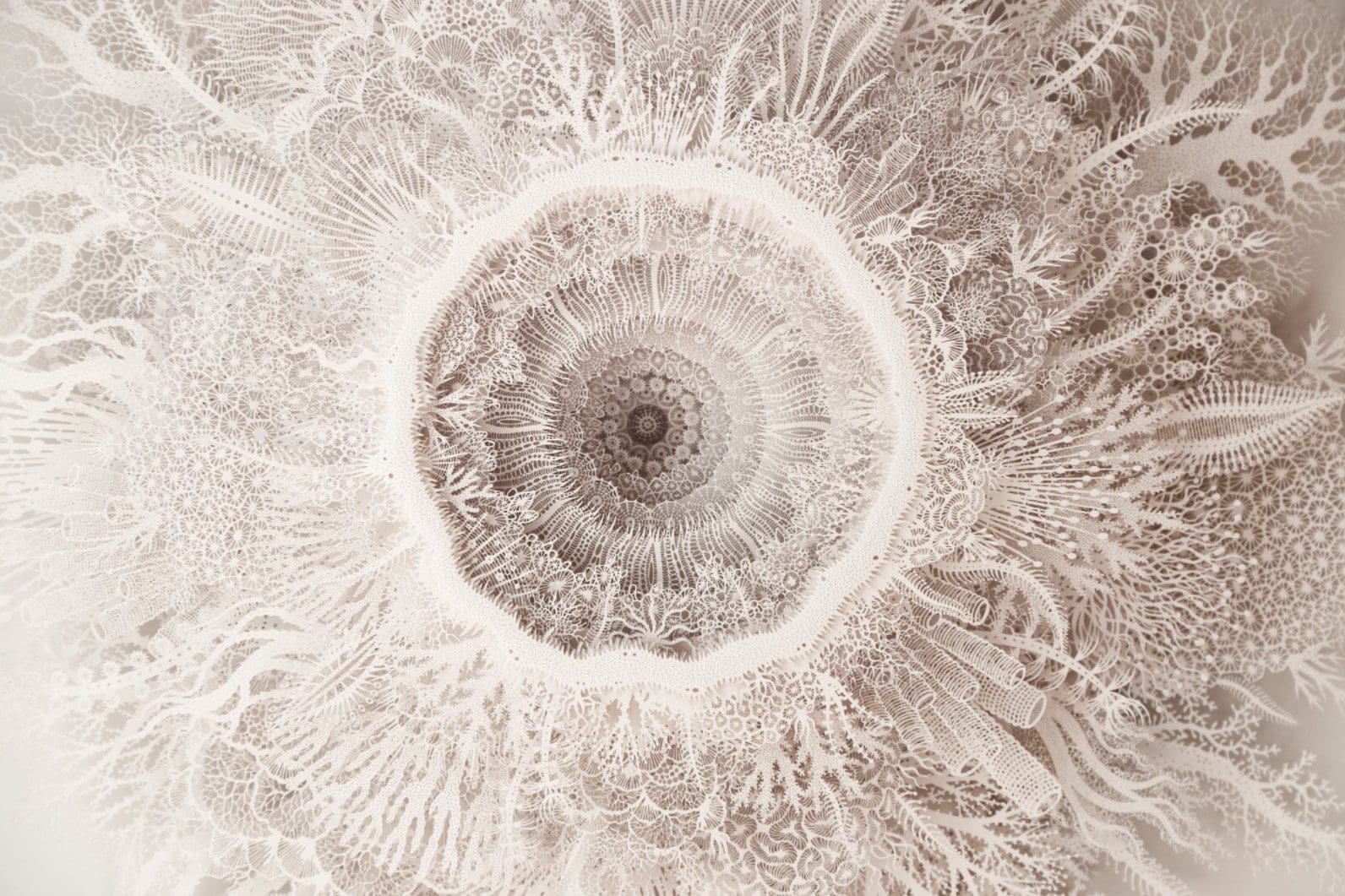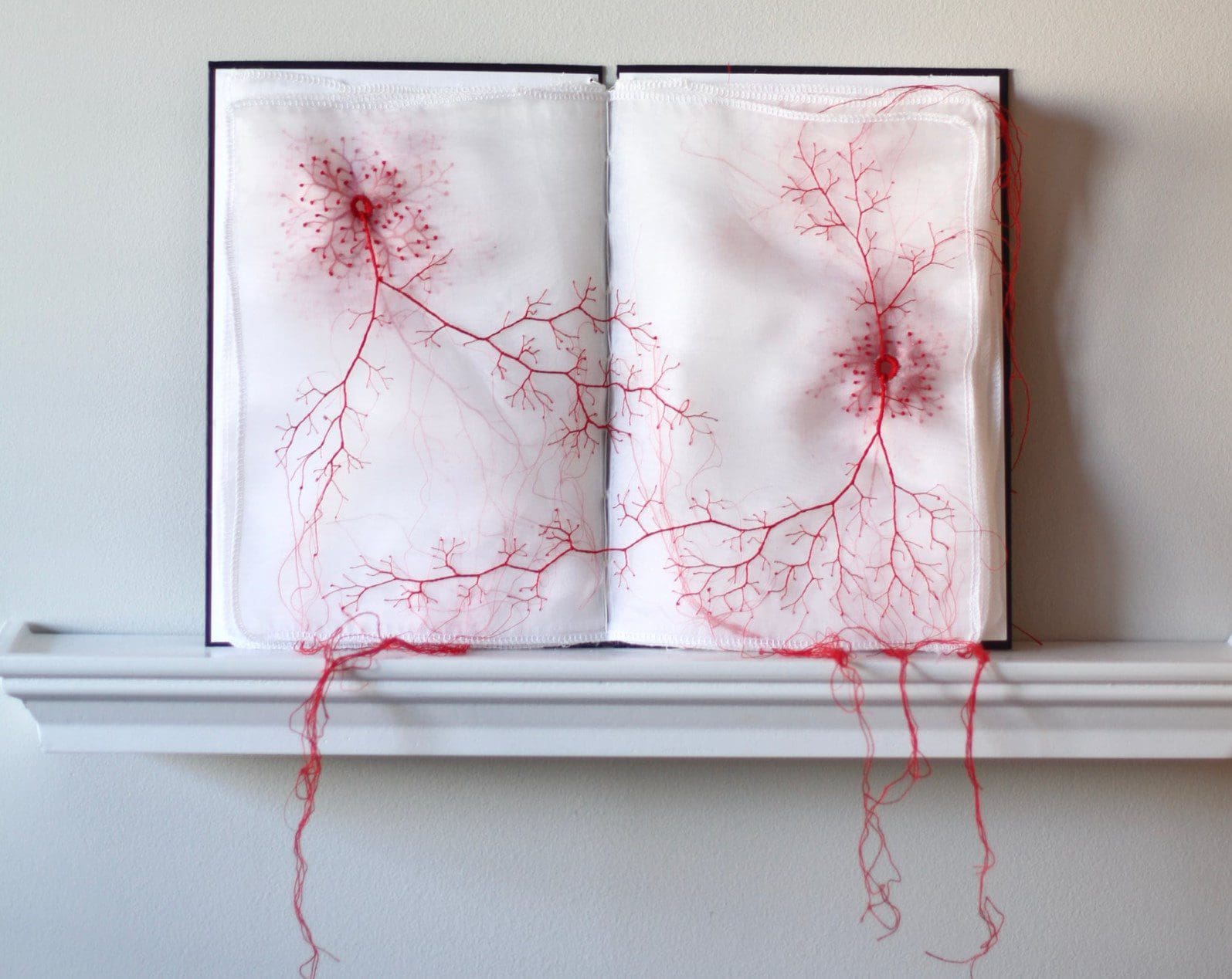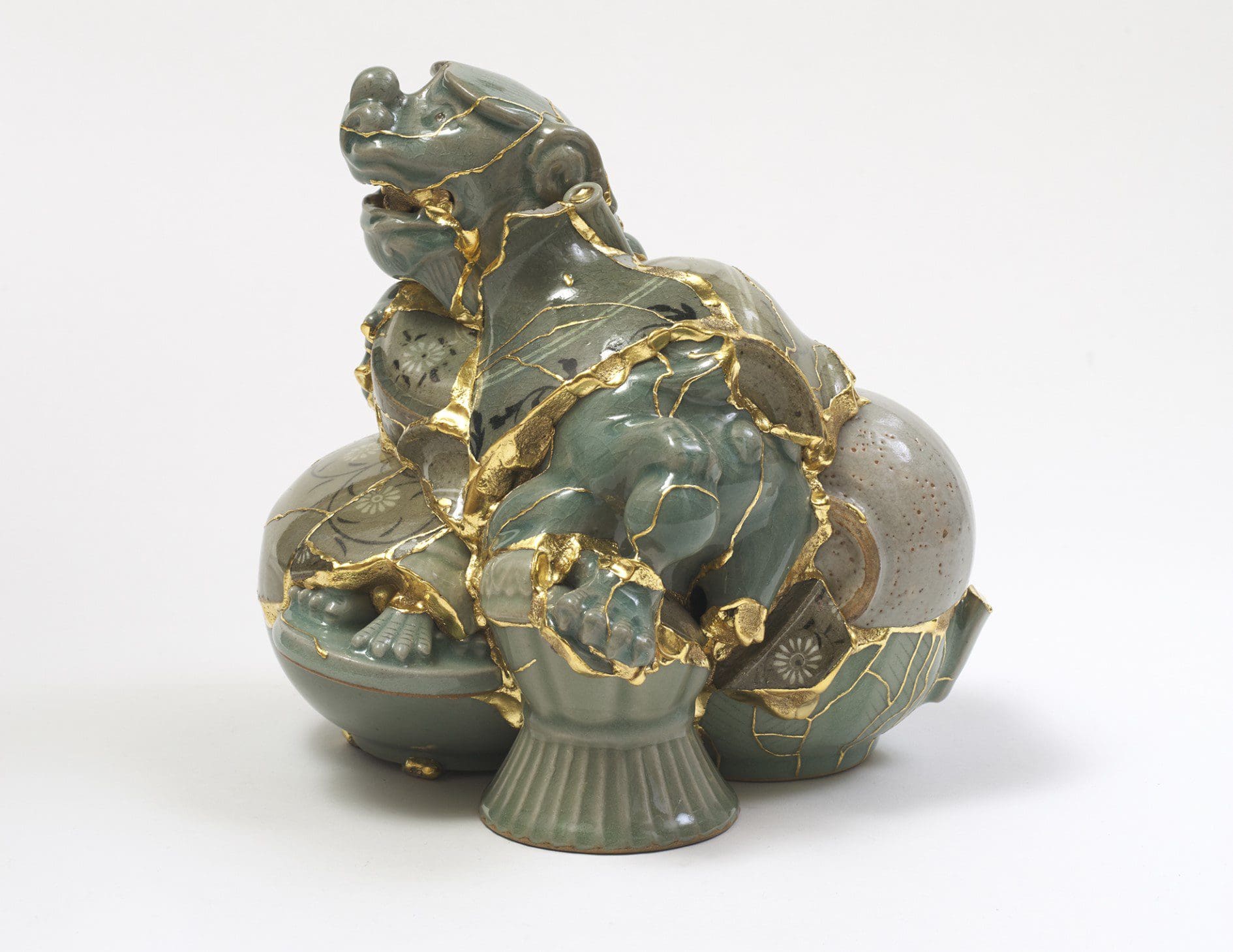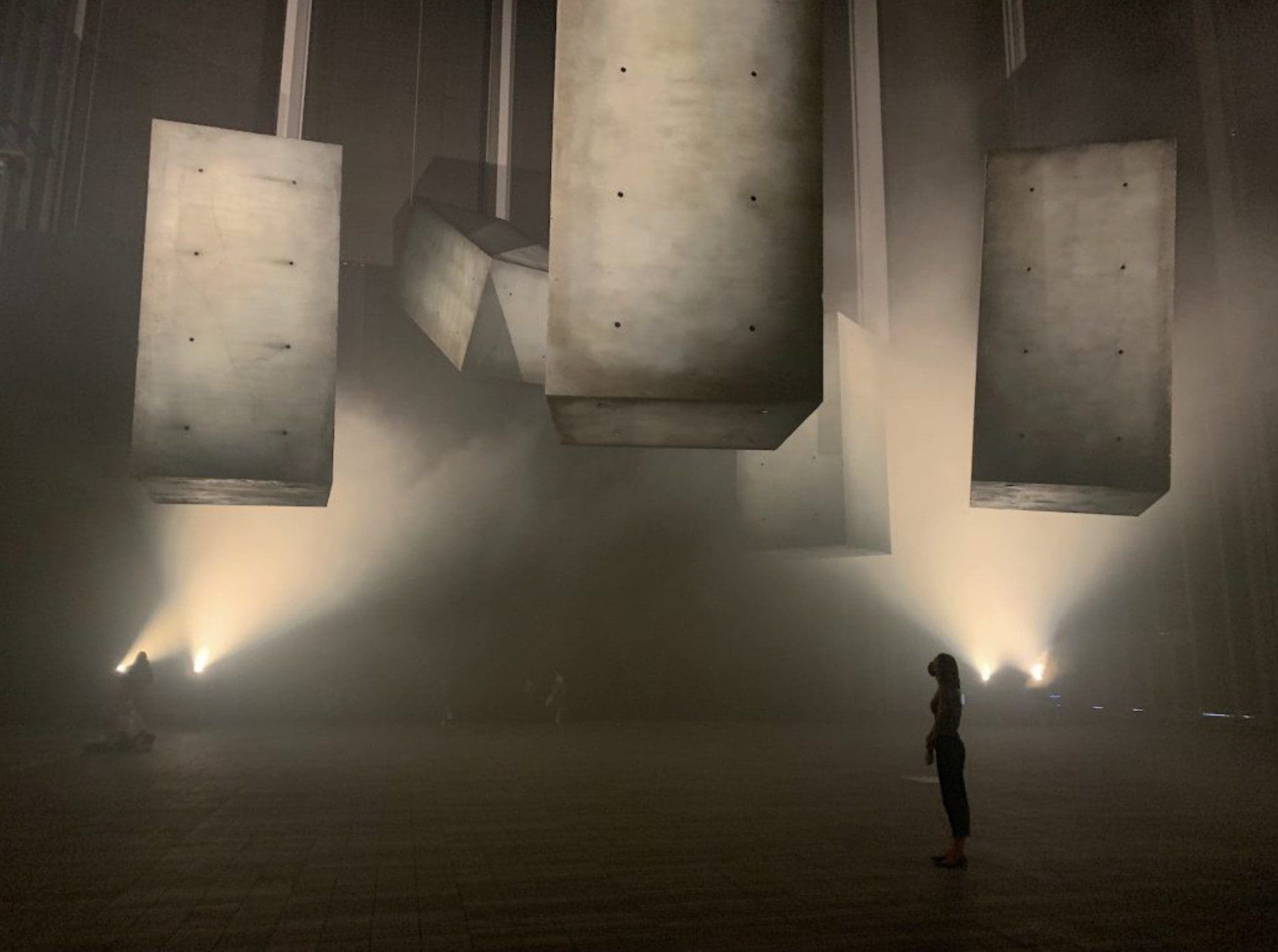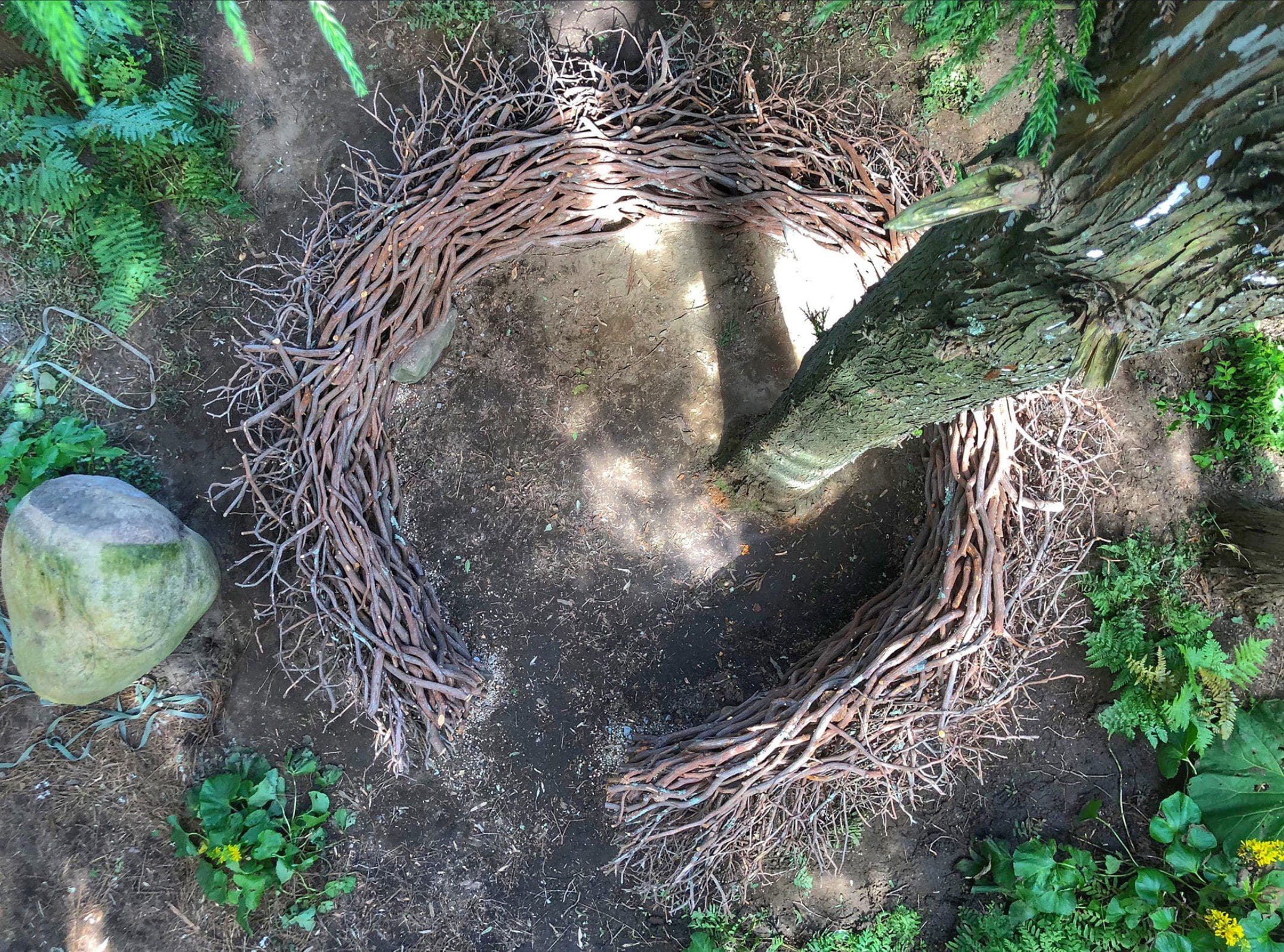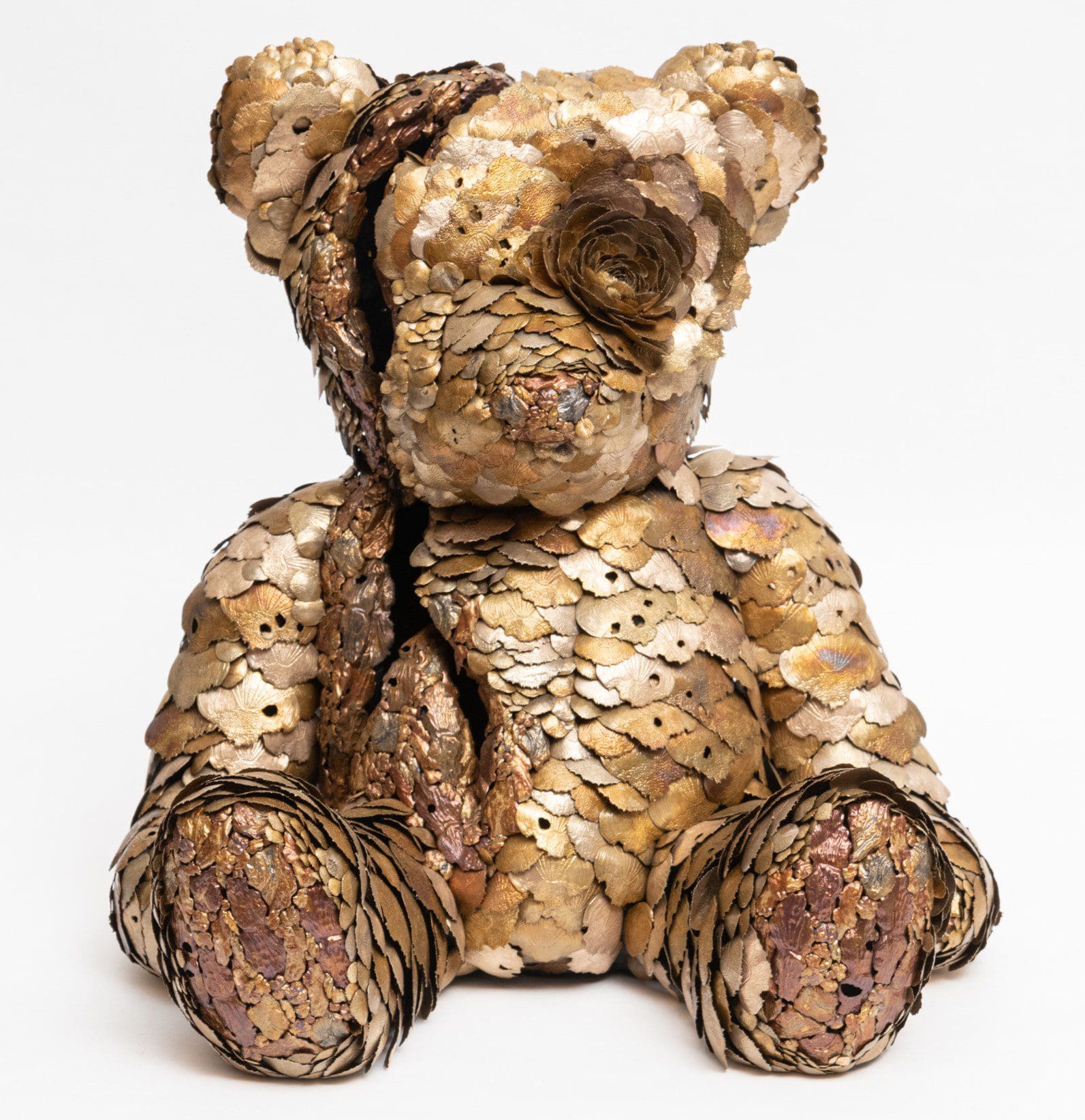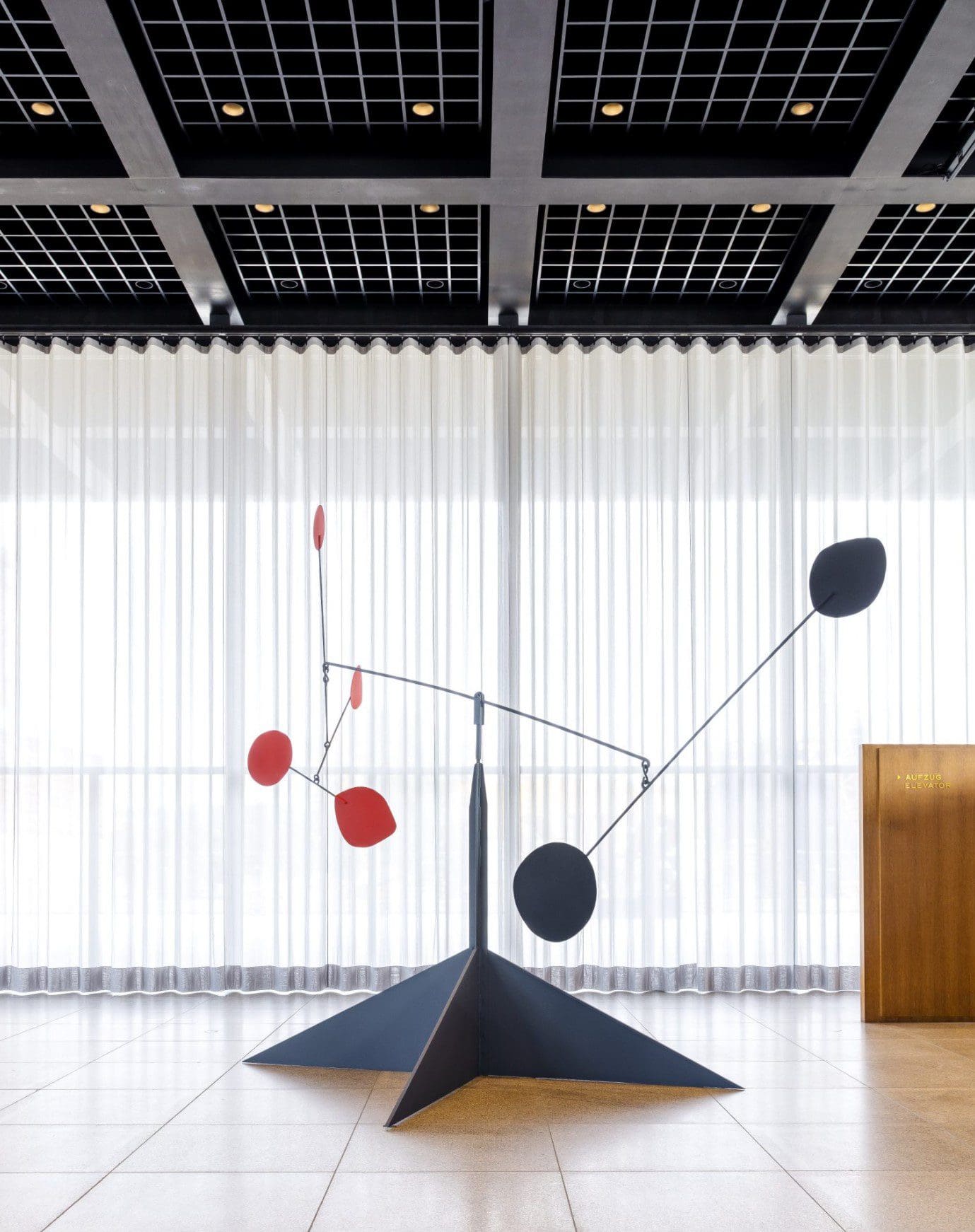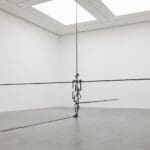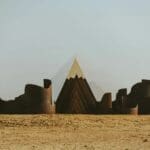Detail of “Ghost Coral”
“The coral reef is a microcosm of a macrocosm,” says paper artist Rogan Brown. “What is happening to the reefs today will ultimately happen to the planet tomorrow unless action is taken.” Through new paper sculptures comprised of delicately fringed sea creatures, Brown (previously) creates a striking visual display of the disastrous impacts of the climate crisis on marine life, showing how issues like coral bleaching can radiate outward into the wider world.
In “Ghost Coral,” two circular reliefs comprised of intricate paper cuttings splay outward, layering the fragile lifeforms sliced from stark, white paper. These monochromatic pieces contrast their vibrant counterparts, which are nestled into the protective center of one of the masses.

